Beneath and Beyond: Badgers, their Setts and Nests
Imogen takes a look at the nesting behaviour of badgers

The intrigue began unassumingly enough, when I saw a detailed survey of a badger sett from 1976 on the kitchen wall of a friend's house depicting a sett in Southern England. The Eurasian Badger (Meles meles), are a relatively common sight across the UK, with estimated 10% of the UK's 350,000 badger population residing in Scotland. The complex network of tunnels unveiled in the survey (below) had ignited my curiousity. I have a passion for all things underground, you see, a passion nurtured by many years of caving.
Since the start of December, I have immersed myself in research about these fascinating creatures, learning a great deal. And just after Christmas I had a tour of some badger territories over in Moray - to see how badgers behave and how to recognise tracks and signs. For those interested - see this excellent webpage from Scottish Badgers on this subject:
But today, I’m going to enlighten you on a little of what I have discovered about the setts themselves, these underground kingdoms. As someone who is interested in all things subterranean, learning about badger setts is like discovering a kindred spirit from the animal kingdom. Setts are not just burrows; they are complex structures. The most elaborate setts, constituting years of continuous expansion and use, can be remarkably extensive. In one example one single UK sett was found to cover over 2 square kilometres. Even more impressively, a sett in northeastern europe showed evidence of existing for around 10,000 years. That’s a lot of building and maintainence.
Building and maintainence are what badgers are good at. When it comes to construction sites, badgers will be quite selective. They prefer well-drained, easy-to-dig soils, often on slopes that offer a natural woodland cover, though they can choose man made covered sites if they have no other choice. Their meticulously dug out passages, run about half a metre to two metres beneath the ground and include larger chambers for sleeping or nurturing their young. Badgers will bring in dry materials like grass and bracken to make their chambers cosy.

You would think with such a fantastic home badgers might store food there in the lean times, but they are not known for this sort of cacheing behaviour, and will continue to forage for food all through the winter months, they may very occasionaly take food back to the sett for eating (instances have been recorded), but their preference remains for dining out.
A typical large sett will comfortably accommodate around 15 badgers, with a labyrinth stretching up to 300 meters, sporting 40 or more entrances. A tell tale sign that you are looking at a badger entrance is the "spoil heap," mounds of excavated material. These photos were taken on my recent sett tour in Moray.
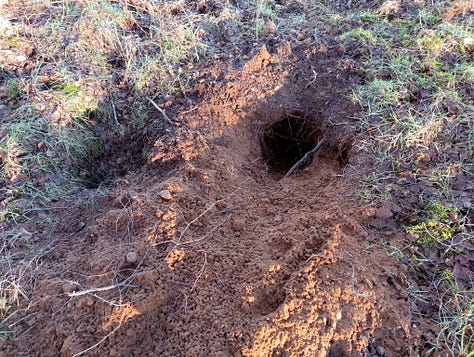
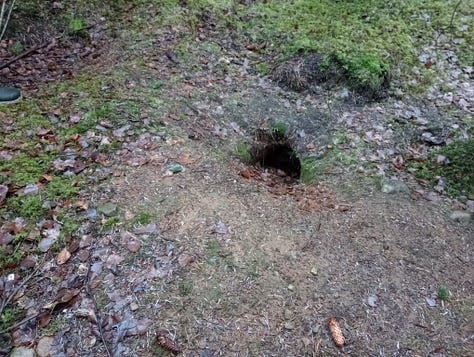
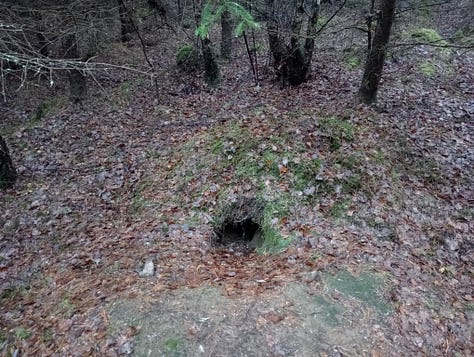
Much like a human midden - these heaps are often a historical archive of old bedding, marked stones, and occasionally the bones of past inhabitants, cleared out by later generations. This aspect of sett life highlights the badgers' meticulous approach to housekeeping and maintenance of their setts over generations. They are also able to co-habit with some other creatures most commonly foxes, and this does not appear to affect the reproduction of either species according to recent studies.
So roll on January, and the mid winter cold was setting in. Imagine my delight when walking round my very own garden I saw this….
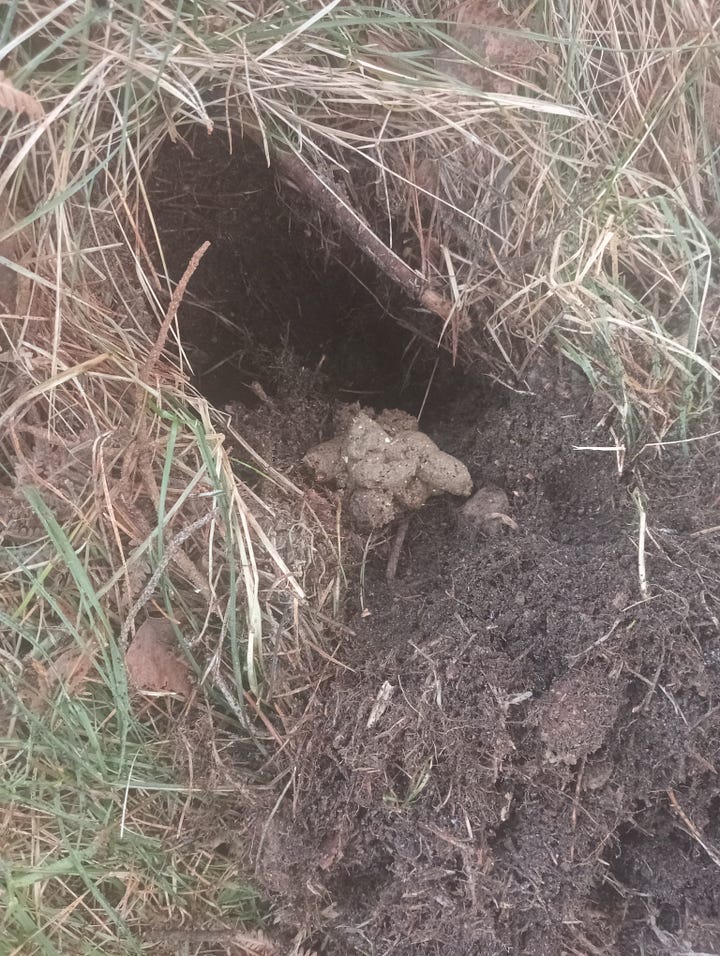
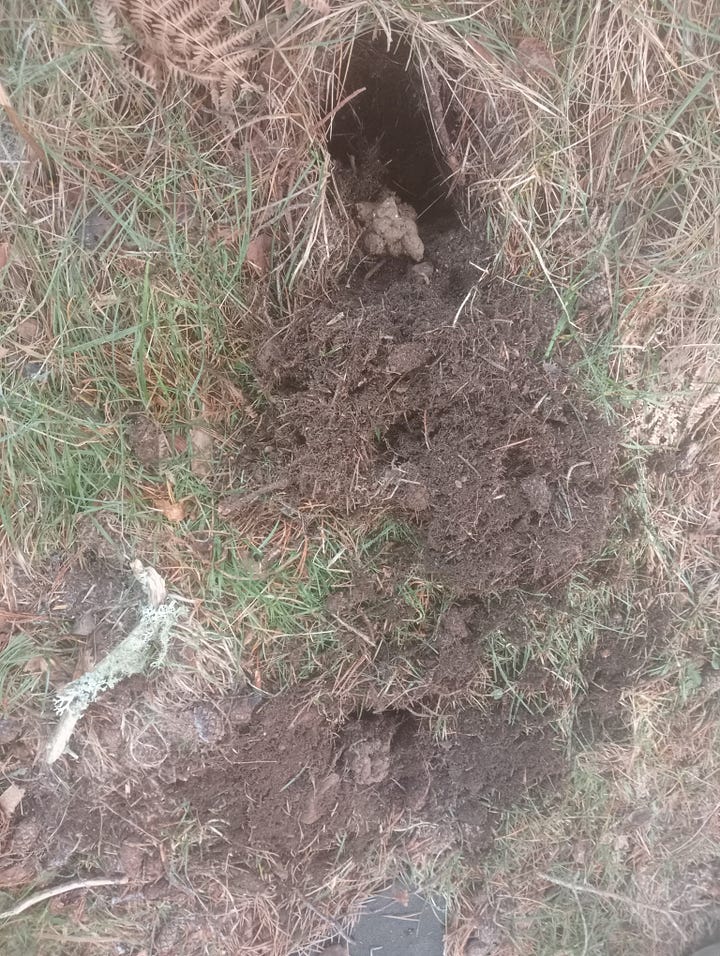
…a latrine pit - and a fresh one at that.
Above ground, badgers maintain 'latrines' or toilets, usually located at the edge of their territory. These small holes grouped together with excrement serve as a territorial marker, a concept familiar in the animal kingdom but deligently executed by badgers.
Close to this latrine under a big pine tree I also found a badger nest:
I didn’t realise that’s what it was at first. I honestly had no idea badgers nested above ground as well as underground in their setts. Subsequent research of mine shows that nests such as these, often found in dense undergrowth, under trees or among thickets, serve as temporary resting places or shelters at certain times of the year, particularly when the underground setts are being cleaned or become overcrowded.
These nests are used by badgers in the daytime as well as after dark. Constructed from leaves, grass, and bracken, the nests provide insulation and protection to a wandering badger, or to groom and sometimes even to mate. The above ground nest can be crucial during the winter months when our eurasian badgers need to achieve extra warmth in their nocturnal wanderings.
This sort of behavior showcases the badger's adaptability and resourcefulness and demonstrates their ability to comfortably dwell both below and above the ground, depending on environmental conditions and social dynamics within their community.
I was lucky enough to get some footage of my garden badger visitor and if you use facebook you can access that footage on our High Life Highland Ranger page here: https://www.facebook.com/reel/679787660977404. There is, however, much better footage in this wonderful wee video below which really shows what badgers get up to in their above ground nests.
For me learning about badgers and their habitats from their setts to their nests, has also heightened my own awareness of the need for their conservation. Badgers in Scotland face multiple threats, including habitat destruction and they often end up as unfortunate road casualties (they have very poor eyesight - navigating by smell).
Scottish Badgers, is a dedicated charity which works towards the conservation and protection of badgers and their natural habitats, encouraging tolerance and appreciation of these remarkable of Highlands residents. There is currently a great citizen science and volunteering programme taking place across Scotland. If you’d like to get involved with Badgers you can contact their co-ordinator through Get Sett Scotland | Scottish Wildlife Trust .
We also aim to keep you posted of any local volunteering opportunities and training coming up in Highland in the months to come, so if you can follow us on Facebook.
If you have a wild life camera and feel inspired to get your own footage - please read the guidance on using wildlife cameras to capture badger footage responsibly, which can be found here Badger Surveying - Scottish Badgers.
Further reading:
European badger | Wildlife Online
Scottish Badgers- information-hub
Scottish Wildlife Trust - Badgers
Imogen Furlong, the High Life Highland Countryside Ranger Manager, is known for her enthusiasm, organisation, and drive. Her deep passion for the Scottish Highlands' wildlife and extensive experience in outdoor education and recreation management have been central to this role. Imogen is a practical and collaborative project manager, empowering her teams to work effectively in communities and contribute to local conservation efforts.



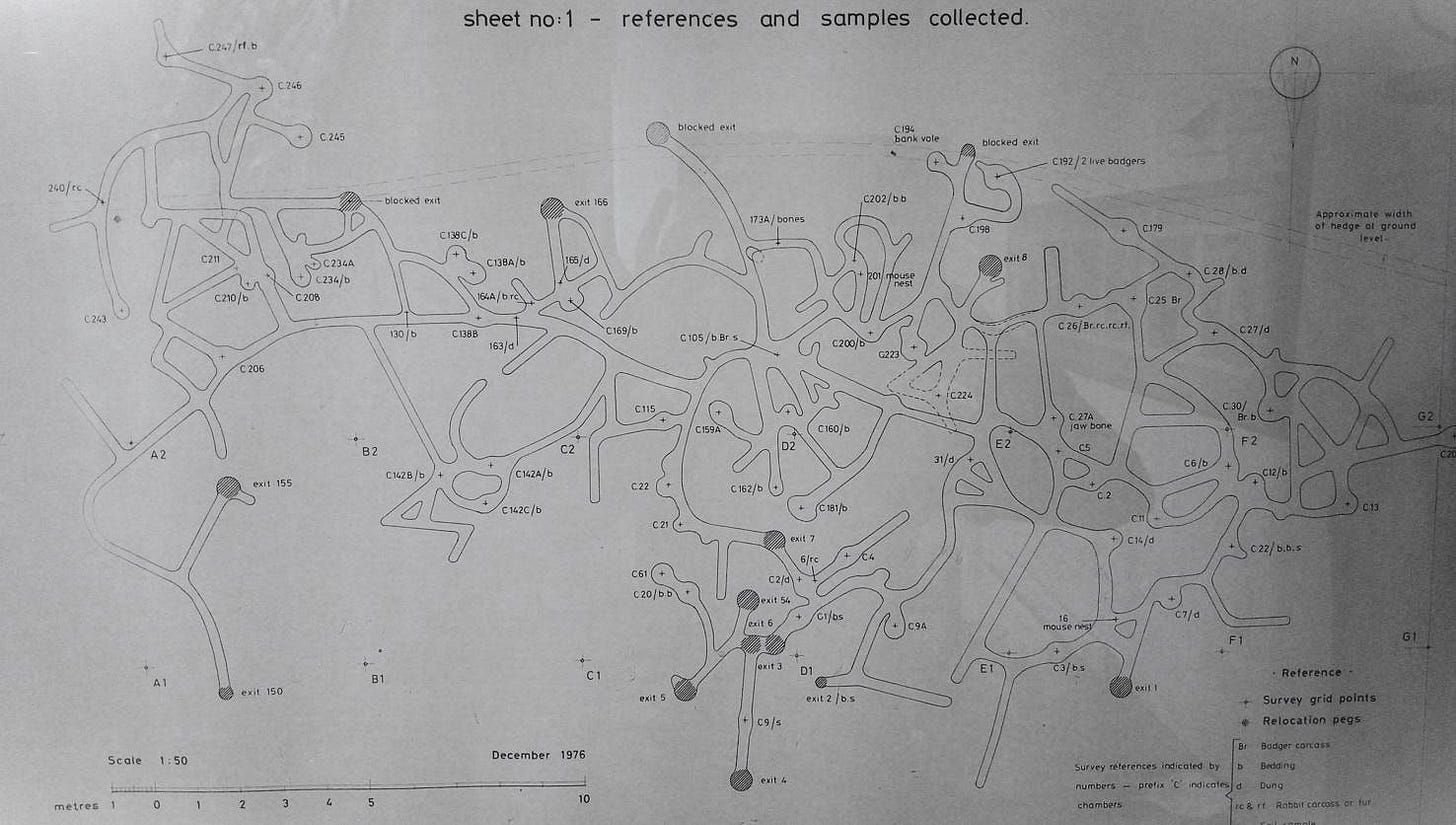
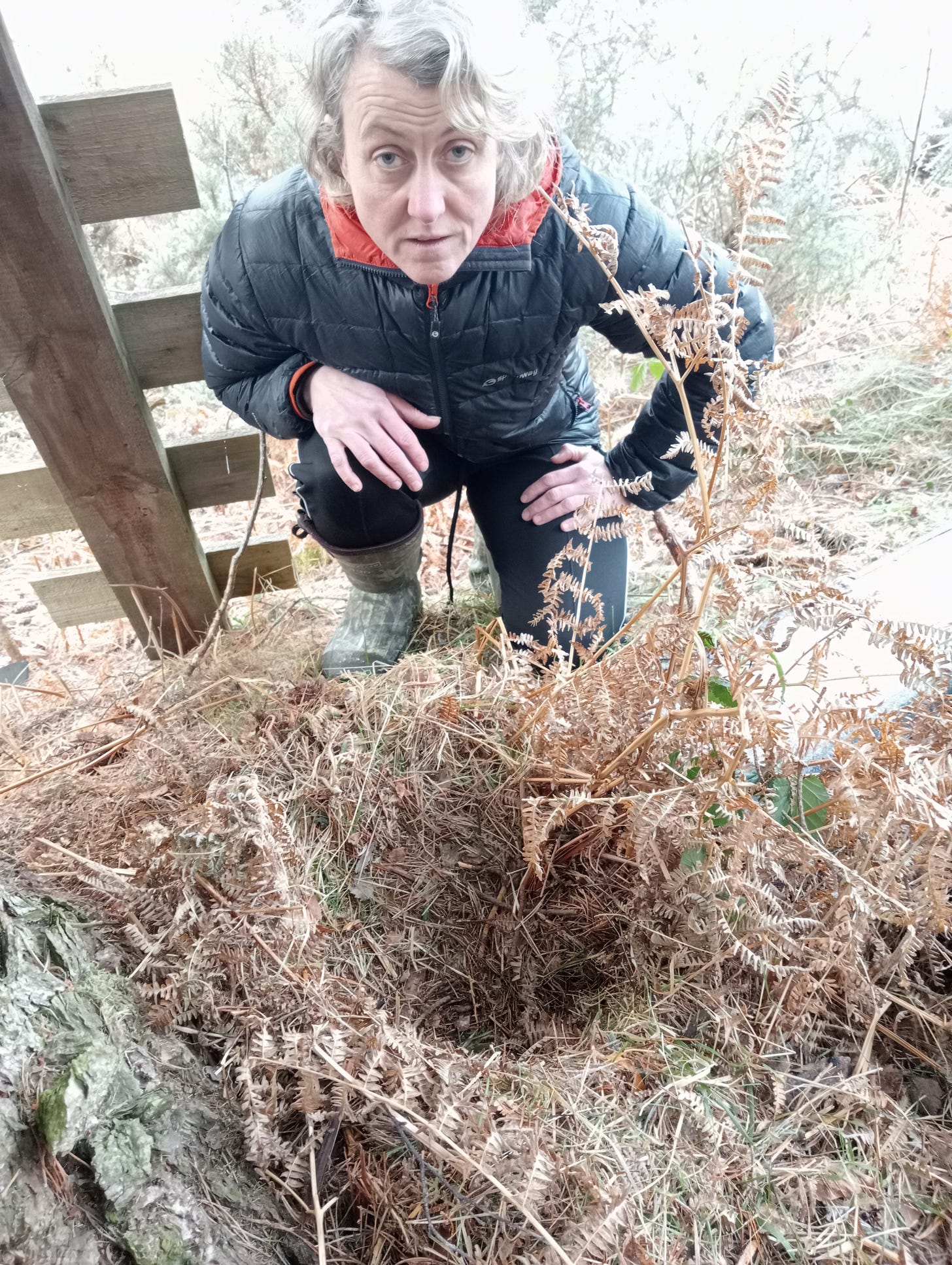

Morag here from Scottish Badgers Get Sett Scotland project - loved reading your badger post! If anyone is interested in getting involved in Get Sett - we are surveying 1000 preset squares across the whole of the Scottish mainland, where badgers can be found (the only island they are found is Arran). We have training sessions coming up in the highlands - one at Dundreggan (still being finalised, so not quite definite) on 16th March and the other Clephanton, near Nairn on17th March. To take part in the survey you need to take part in the field training day, and a two hour online training session. Both are free on the condition that you commit to taking on and surveying one of our squares following training. If you are interested, please email me morag@scottishbadgers.org.uk and I'll add you to our lists!